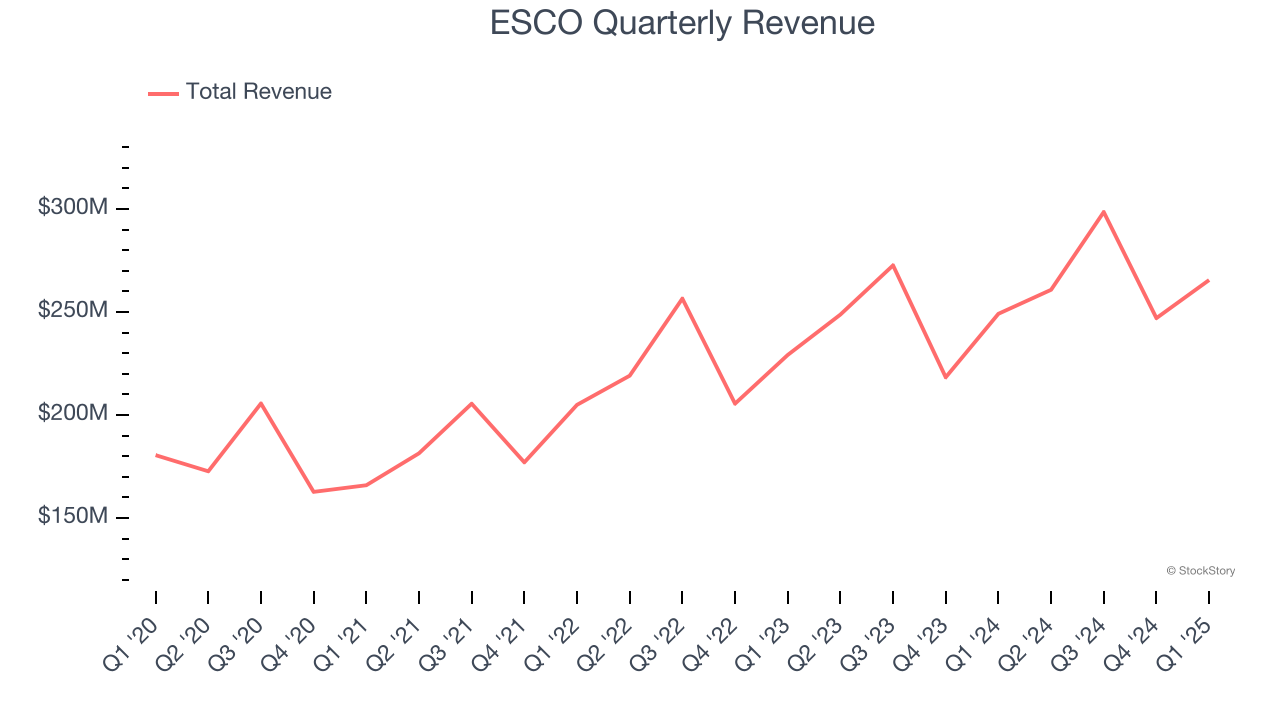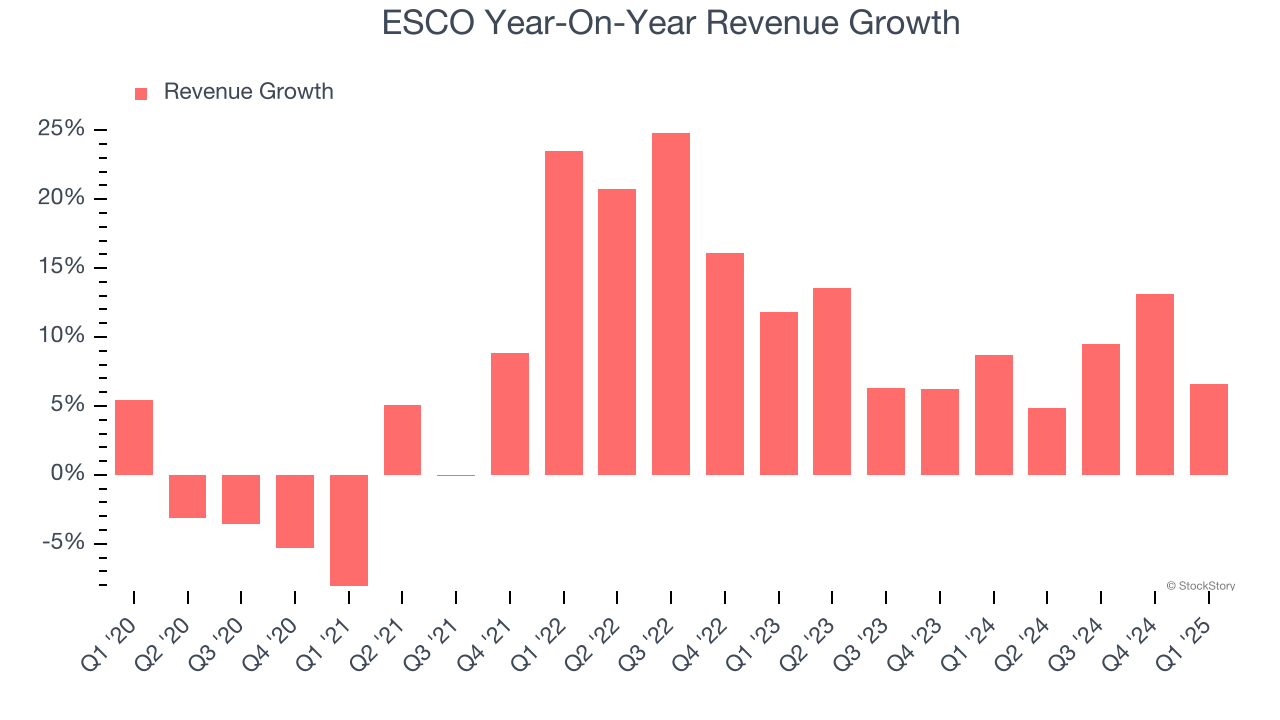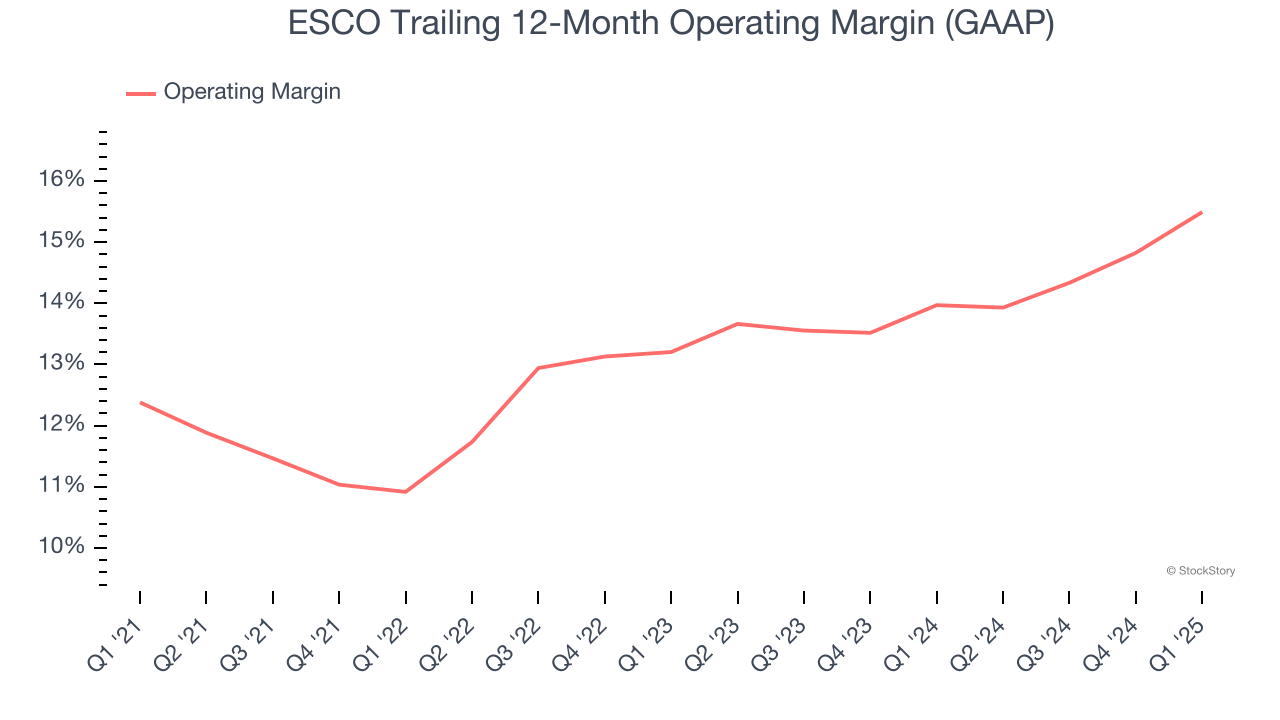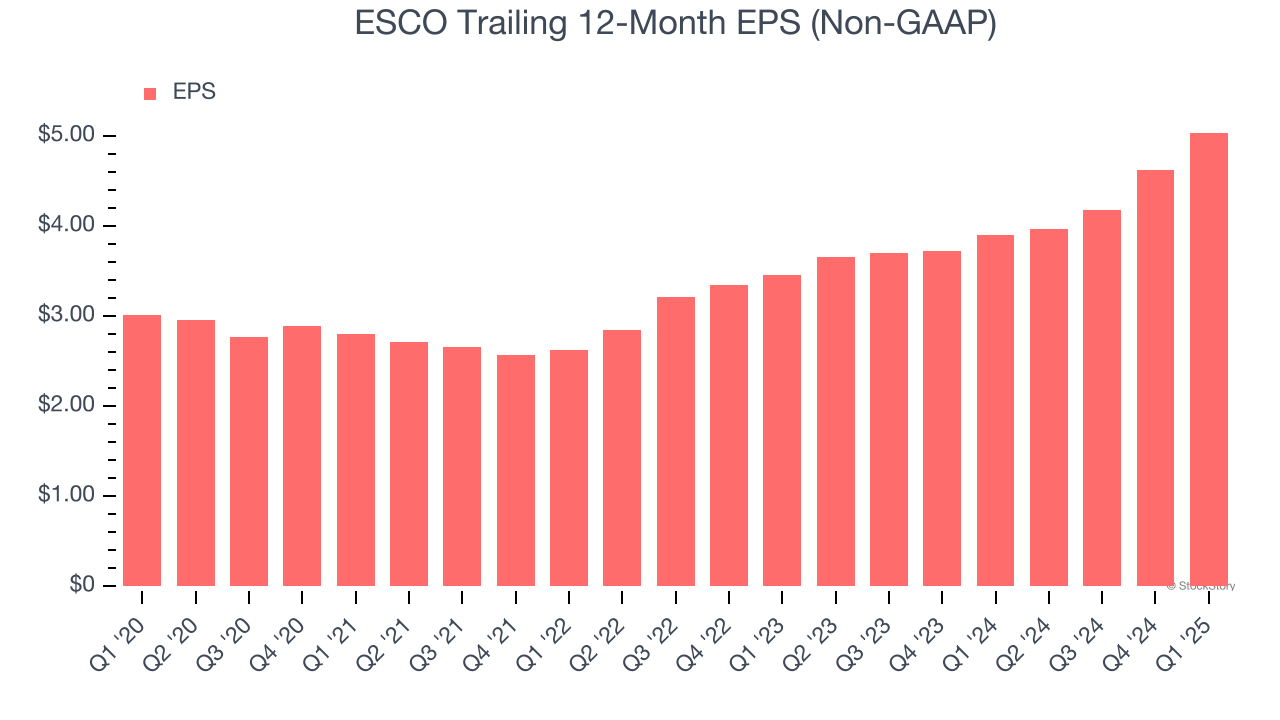
Engineered products manufacturer ESCO (NYSE: ESE) met Wall Street’s revenue expectations in Q1 CY2025, with sales up 6.6% year on year to $265.5 million. The company’s full-year revenue guidance of $1.20 billion at the midpoint came in 4.5% above analysts’ estimates. Its non-GAAP profit of $1.35 per share was 8.3% above analysts’ consensus estimates.
Is now the time to buy ESCO? Find out by accessing our full research report, it’s free.
ESCO (ESE) Q1 CY2025 Highlights:
- Revenue: $265.5 million vs analyst estimates of $266.4 million (6.6% year-on-year growth, in line)
- Adjusted EPS: $1.35 vs analyst estimates of $1.25 (8.3% beat)
- Adjusted EBITDA: $56.67 million vs analyst estimates of $54.29 million (21.3% margin, 4.4% beat)
- Management raised its full-year Adjusted EPS guidance to $6 at the midpoint, a 6.2% increase
- Operating Margin: 16.1%, up from 13.3% in the same quarter last year
- Free Cash Flow Margin: 5.3%, up from 0.8% in the same quarter last year
- Backlog: $932.3 million at quarter end
- Market Capitalization: $4.23 billion
Bryan Sayler, Chief Executive Officer and President, commented, “Q2 was another strong quarter as we delivered 7 percent top line growth, 250 basis points of Adjusted EBITDA margin expansion, and a 24 percent increase in Adjusted EPS compared to the prior year. All three segments delivered solid revenue growth, highlighted by strength across our Navy, commercial aerospace, utility, and Test end-markets. It was very positive to see orders increase 22 percent over the prior year, with particular strength in both USG and Test.
Company Overview
A developer of the communication systems used in the Batmobile of “The Dark Knight,” ESCO (NYSE: ESE) is a provider of engineered components for the aerospace, defense, and utility sectors.
Sales Growth
Examining a company’s long-term performance can provide clues about its quality. Any business can put up a good quarter or two, but the best consistently grow over the long haul. Thankfully, ESCO’s 7.6% annualized revenue growth over the last five years was decent. Its growth was slightly above the average industrials company and shows its offerings resonate with customers.

We at StockStory place the most emphasis on long-term growth, but within industrials, a half-decade historical view may miss cycles, industry trends, or a company capitalizing on catalysts such as a new contract win or a successful product line. ESCO’s annualized revenue growth of 8.5% over the last two years aligns with its five-year trend, suggesting its demand was stable. 
This quarter, ESCO grew its revenue by 6.6% year on year, and its $265.5 million of revenue was in line with Wall Street’s estimates.
Looking ahead, sell-side analysts expect revenue to grow 18.2% over the next 12 months, an improvement versus the last two years. This projection is eye-popping and indicates its newer products and services will fuel better top-line performance.
Here at StockStory, we certainly understand the potential of thematic investing. Diverse winners from Microsoft (MSFT) to Alphabet (GOOG), Coca-Cola (KO) to Monster Beverage (MNST) could all have been identified as promising growth stories with a megatrend driving the growth. So, in that spirit, we’ve identified a relatively under-the-radar profitable growth stock benefiting from the rise of AI, available to you FREE via this link.
Operating Margin
ESCO has been an efficient company over the last five years. It was one of the more profitable businesses in the industrials sector, boasting an average operating margin of 13.4%. This result isn’t surprising as its high gross margin gives it a favorable starting point.
Looking at the trend in its profitability, ESCO’s operating margin rose by 3.1 percentage points over the last five years, as its sales growth gave it operating leverage.

In Q1, ESCO generated an operating profit margin of 16.1%, up 2.8 percentage points year on year. The increase was encouraging, and because its operating margin rose more than its gross margin, we can infer it was more efficient with expenses such as marketing, R&D, and administrative overhead.
Earnings Per Share
We track the long-term change in earnings per share (EPS) for the same reason as long-term revenue growth. Compared to revenue, however, EPS highlights whether a company’s growth is profitable.
ESCO’s EPS grew at a solid 10.9% compounded annual growth rate over the last five years, higher than its 7.6% annualized revenue growth. This tells us the company became more profitable on a per-share basis as it expanded.

We can take a deeper look into ESCO’s earnings quality to better understand the drivers of its performance. As we mentioned earlier, ESCO’s operating margin expanded by 3.1 percentage points over the last five years. This was the most relevant factor (aside from the revenue impact) behind its higher earnings; taxes and interest expenses can also affect EPS but don’t tell us as much about a company’s fundamentals.
Like with revenue, we analyze EPS over a shorter period to see if we are missing a change in the business.
For ESCO, its two-year annual EPS growth of 20.7% was higher than its five-year trend. We love it when earnings growth accelerates, especially when it accelerates off an already high base.
In Q1, ESCO reported EPS at $1.35, up from $0.94 in the same quarter last year. This print beat analysts’ estimates by 8.3%. Over the next 12 months, Wall Street expects ESCO’s full-year EPS of $5.04 to grow 22.9%.
Key Takeaways from ESCO’s Q1 Results
It was great to see ESCO raise its full-year EPS guidance and provide full-year revenue guidance that beat Wall Street's estimates. We were also glad its EPS and EBITDA topped expectations. Zooming out, we think this was a good print with some key areas of upside. The stock remained flat at $163.61 immediately after reporting.
Is ESCO an attractive investment opportunity at the current price? What happened in the latest quarter matters, but not as much as longer-term business quality and valuation, when deciding whether to invest in this stock. We cover that in our actionable full research report which you can read here, it’s free.




